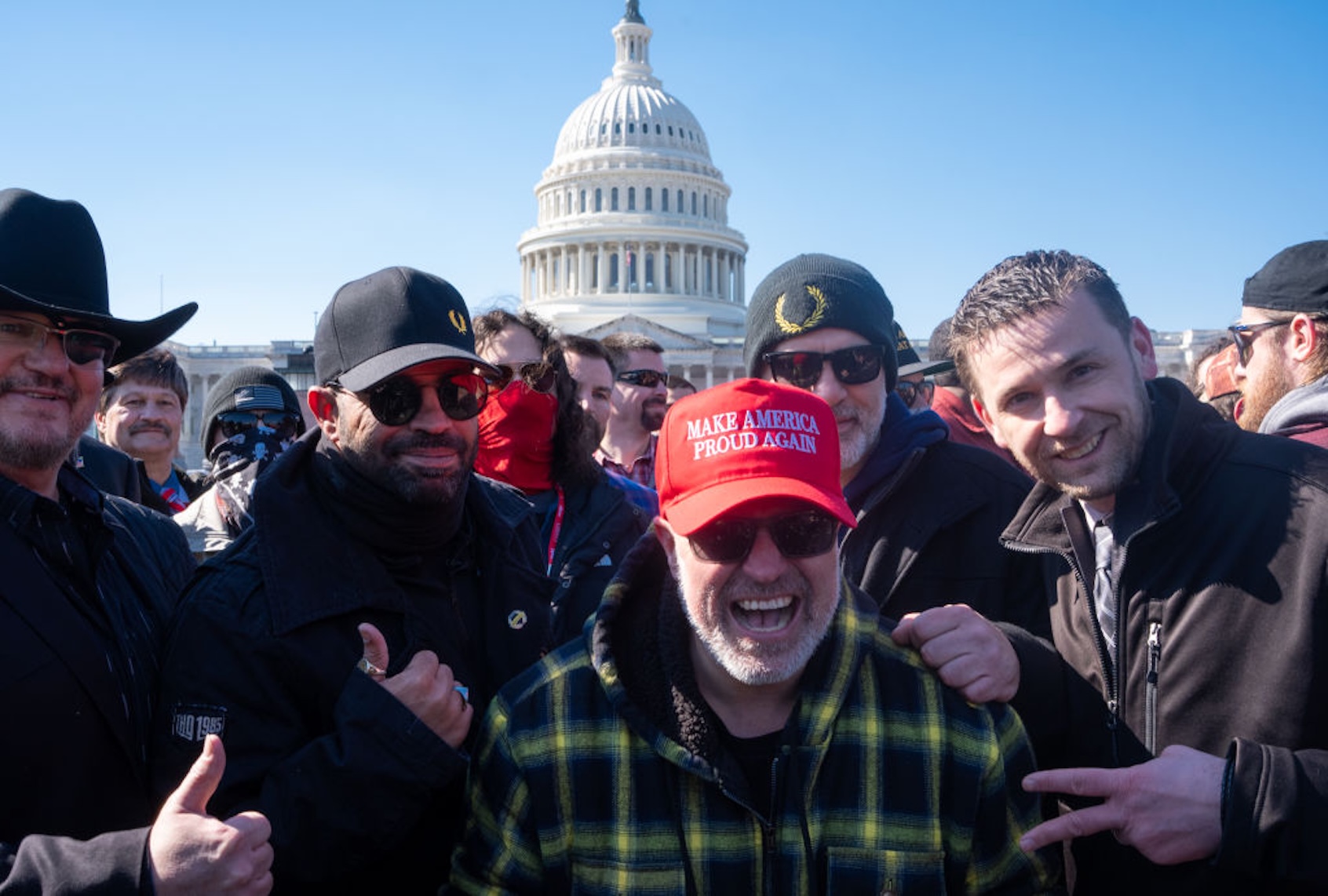World
The Proud Boys’ Role in Shaping the Antifa Narrative

The ongoing political discourse in the United States has brought the topic of antifa to the forefront, particularly following an executive order from former President Donald Trump designating it as a “domestic terrorist organization.” This characterization has drawn significant debate, as many argue that the portrayal of antifa, especially by Trump’s supporters, is largely a fabrication rather than an accurate representation of organized leftist resistance against fascism.
Antifa, short for “anti-fascist,” does exist in various forms, often characterized by individuals and groups who oppose fascist ideologies. Their tactics may include public shaming, outing individuals associated with far-right movements, and, in rare instances, physical confrontations. Nevertheless, the version of antifa depicted by Trump and his administration lacks a factual basis. The president’s assertions that antifa operates as “a militarist, anarchist enterprise” engaged in a campaign of violence and terrorism have been widely criticized as misleading.
The concept of antifa as a significant threat has roots in the strategy employed by far-right groups such as the Proud Boys and the Oathkeepers. These organizations have utilized the narrative of antifa as a means to justify their own use of violence and intimidation against perceived leftist opponents. This tactic serves to create a moral justification for their actions, allowing them to frame themselves as defenders against a non-existent enemy.
Historical Context and Modern Implications
The invocation of antifa by far-right groups has historical parallels to tactics used by fascists in the early 20th century. As noted by political commentators, the rhetoric surrounding antifa mirrors the justifications employed by the Nazis in the 1930s to vilify those resisting their rise to power. The Proud Boys, in particular, have played a significant role in shaping the contemporary narrative around antifa, especially during the first term of Trump’s presidency.
In cities like Portland, Oregon, the Proud Boys have engaged in provocative actions designed to elicit responses from local populations. They have targeted progressive cities with demonstrations characterized by displays of aggression and armed presence. The intent was clear: provoke locals to react, creating a narrative that supports their claims of leftist violence. This strategy reached a tragic climax in August 2020 when Aaron Danielson, a member of the far-right group Patriot Prayer, was shot by Michael Reinoehl, a self-identified leftist. This incident became a rallying point for right-wing narratives, obscuring the reality of violence across the political spectrum.
The Proud Boys’ tactics have evolved, with reports indicating that they are increasingly integrating into the official Republican Party structure. Following the January 6 Capitol riots, many members received pardons, and there has been a shift from street fighting to more insidious forms of political influence. The current strategy involves leveraging law enforcement, including the National Guard and Immigration and Customs Enforcement (ICE), to exert control over progressive areas.
Counteracting the Narrative
Despite the grim implications of these developments, recent protests in Portland have showcased a novel approach to countering the narrative of antifa. Activists have begun to don inflatable animal costumes during demonstrations outside ICE facilities, presenting a stark contrast to the aggressive imagery that Trump has sought to promote. This tactic not only highlights the absurdity of the situation but also undermines the narrative that frames leftist activists as violent extremists.
The response from right-wing commentators, including those like Andy Ngo, who have built careers on perpetuating the myth of antifa, indicates a growing concern over this shift in protest dynamics. Ngo has claimed that the costumes obscure the reality of violence, despite evidence suggesting that they instead highlight police aggression against peaceful demonstrators.
The political climate continues to reflect the broader struggle over narratives of violence and resistance. Trump’s administration has relied on emotional propaganda to deflect from the underlying reality of rising political violence, often linking it to isolated incidents rather than acknowledging the systemic issues at play.
Ultimately, the portrayal of antifa as an organized threat serves to distract from the actions of groups like the Proud Boys, who have increasingly adopted tactics reminiscent of historical fascist movements. By framing their own aggression as a response to a fabricated enemy, they manipulate public perception and justify a continued escalation of violence.
As history illustrates, engaging in violence can often play into the hands of those who seek to control the narrative. The challenge remains to effectively counter these narratives without providing the visuals that groups like the Proud Boys crave. The use of humor and absurdity, as seen with the inflatable costumes, may prove to be a more effective strategy in undermining the fabricated image of antifa and highlighting the dangers of far-right extremism.
-

 Science4 weeks ago
Science4 weeks agoALMA Discovers Companion Orbiting Giant Red Star π 1 Gruis
-

 Politics2 months ago
Politics2 months agoSEVENTEEN’s Mingyu Faces Backlash Over Alcohol Incident at Concert
-

 Top Stories2 months ago
Top Stories2 months agoNew ‘Star Trek: Voyager’ Game Demo Released, Players Test Limits
-

 World2 months ago
World2 months agoGlobal Air Forces Ranked by Annual Defense Budgets in 2025
-

 World2 months ago
World2 months agoElectrification Challenges Demand Advanced Multiphysics Modeling
-

 World2 months ago
World2 months agoMass Production of F-35 Fighter Jet Drives Down Costs
-

 Business2 months ago
Business2 months agoGold Investment Surge: Top Mutual Funds and ETF Alternatives
-

 Science2 months ago
Science2 months agoTime Crystals Revolutionize Quantum Computing Potential
-

 Top Stories2 months ago
Top Stories2 months agoDirecTV to Launch AI-Driven Ads with User Likenesses in 2026
-

 Entertainment2 months ago
Entertainment2 months agoFreeport Art Gallery Transforms Waste into Creative Masterpieces
-

 Health2 months ago
Health2 months agoGavin Newsom Critiques Trump’s Health and National Guard Plans
-

 Business2 months ago
Business2 months agoUS Government Denies Coal Lease Bid, Impacting Industry Revival Efforts









